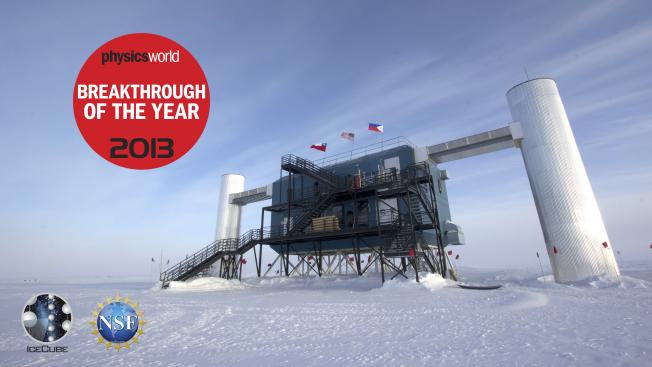Limits on a muon flux from neutralino annihilations in the sun with the IceCube 22-string detector.
Phys Rev Lett 102:20 (2009) 201302
Abstract:
A search for muon neutrinos from neutralino annihilations in the Sun has been performed with the IceCube 22-string neutrino detector using data collected in 104.3 days of live time in 2007. No excess over the expected atmospheric background has been observed. Upper limits have been obtained on the annihilation rate of captured neutralinos in the Sun and converted to limits on the weakly interacting massive particle (WIMP) proton cross sections for WIMP masses in the range 250-5000 GeV. These results are the most stringent limits to date on neutralino annihilation in the Sun.Testing astrophysical models for the PAMELA positron excess with cosmic ray nuclei
(2009)
Determination of the atmospheric neutrino flux and searches for new physics with AMANDA-II
Physical Review D - Particles, Fields, Gravitation and Cosmology 79:10 (2009)
Abstract:
The AMANDA-II detector, operating since 2000 in the deep ice at the geographic South Pole, has accumulated a large sample of atmospheric muon neutrinos in the 100GeV to 10TeV energy range. The zenith angle and energy distribution of these events can be used to search for various phenomenological signatures of quantum gravity in the neutrino sector, such as violation of Lorentz invariance or quantum decoherence. Analyzing a set of 5511 candidate neutrino events collected during 1387 days of livetime from 2000 to 2006, we find no evidence for such effects and set upper limits on violation of Lorentz invariance and quantum decoherence parameters using a maximum likelihood method. Given the absence of evidence for new flavor-changing physics, we use the same methodology to determine the conventional atmospheric muon neutrino flux above 100GeV. © 2009 The American Physical Society.The IceCube data acquisition system: Signal capture, digitization, and timestamping
Nuclear Instruments and Methods in Physics Research, Section A: Accelerators, Spectrometers, Detectors and Associated Equipment 601:3 (2009) 294-316
Abstract:
IceCube is a km-scale neutrino observatory under construction at the South Pole with sensors both in the deep ice (InIce) and on the surface (IceTop). The sensors, called Digital Optical Modules (DOMs), detect, digitize and timestamp the signals from optical Cherenkov-radiation photons. The DOM Main Board (MB) data acquisition subsystem is connected to the central DAQ in the IceCube Laboratory (ICL) by a single twisted copper wire-pair and transmits packetized data on demand. Time calibration is maintained throughout the array by regular transmission to the DOMs of precisely timed analog signals, synchronized to a central GPS-disciplined clock. The design goals and consequent features, functional capabilities, and initial performance of the DOM MB, and the operation of a combined array of DOMs as a system, are described here. Experience with the first InIce strings and the IceTop stations indicates that the system design and performance goals have been achieved. © 2009 Elsevier B.V.Limit on the diffuse flux of ultra-high energy tau neutrinos with the surface detector of the Pierre Auger Observatory
ArXiv 0903.3385 (2009)



